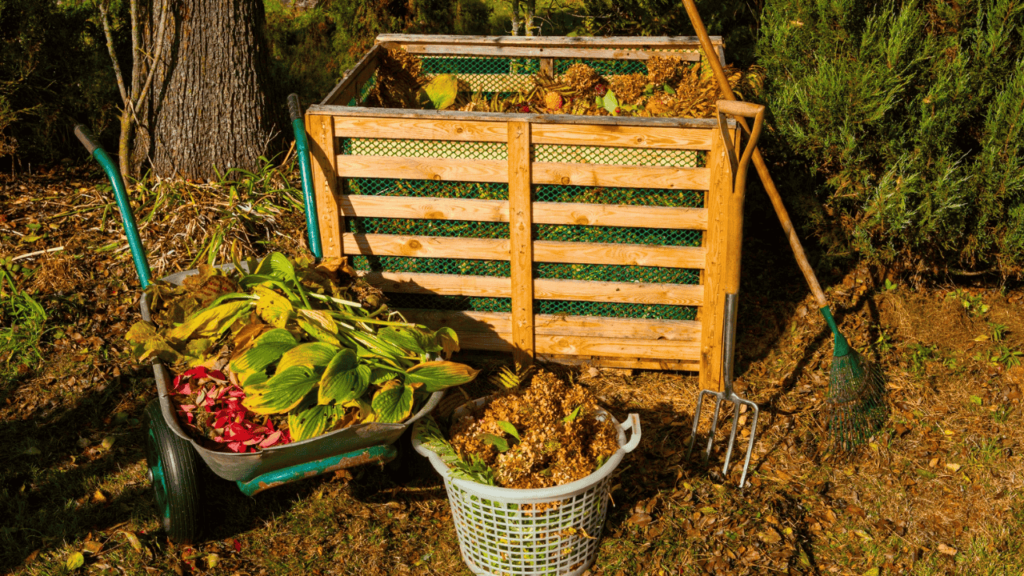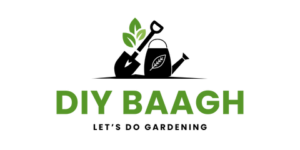An organic substance called compost can be put in soil to promote plant development. “Compost is a key ingredient in organic farming,” states Wikipedia. The most basic step in the composting process is to create a pile of wet organic material, or “green waste,” which includes food scraps and leaves, and then wait for the material to decompose into humus over a few weeks or months.
It is a method for breaking down organic compounds. Organic matter naturally breaks down into simple organic or inorganic substances through a process called decomposition.
Composting should be used for 28% of our trash, which includes yard waste and kitchen leftovers. There is a method to follow if you are new to composting. To ensure that the microorganisms breaking down the mix are not overloaded and have the opportunity to proliferate, you must feed the pile properly.
Advantages of Composting

The advantages of composting are numerous:
It helps plants overcome plant diseases and keeps the soil moist.
It reduces methane emissions from landfills.
It promotes the growth of helpful fungus and bacteria that decompose organic materials to produce humus.
Composting eliminates the need for synthetic fertilizers.
Compost can be made at home in a specific kind of bin that you can purchase from the shop. This will prevent pests from entering and eliminate bed odor.
when you make the decision to compost your garden on your own. What can be used to create compost is the next thing that springs to mind. We’ll talk about items you can use to make compost in this post.
It can be very complicated to determine what is okay to put in your composting bin and what should be left out. To complete this recycling procedure correctly, you need to know a few things.
By doing this, you not only clean up your surroundings but also recycle materials that can be used in place of fertilizer. You can easily remove items from your kitchen to utilize in the composting process.
The best part is that you can strive to keep dangerous items out of your bin and have control over what goes in. When creating compost, employ a variety of components rather than just one.
What to Compost?

A wider range of materials should be used since a richer final product will provide the soil with all the elements it needs. Numerous items are available for use, including
Brown Green
Brown
A balanced brown and green mix is part of composting. Browns are carbon- or carbohydrate-rich compounds. Brown materials aid to allowing air to filter and interact with the bacteria to break the substance.
Fall leaves
Pine needles
Twigs
Hay or straw
Sawdust
Corn, Cotton fabric
Papers are considered brown materials. Compost can be enhanced with wood chips, sawdust, sticks, twigs, and pine needles. But you should use them carefully because they contain a large quantity of carbon.
Keep these materials out of your compost since they take a long time to break down and require a lot of nitrogen. You can incorporate minerals like rich algae, kelp meal, or lake weed into your bin.
The only thing you need to do is wash them with salty water before adding them. If you are utilizing a high amount of pine needles and oak leaves, then utilize ashes from wood-burning. It will change the pH of your compost if it becomes acidic.
Greens

Greens are materials that are high in nitrogen and protein. They help bacteria to thrive and promote their growth. Wet or recently grown materials make up the majority of their composition. They include the verdant vegetation such as
Fruit and vegetable scraps
Teabags
Clippings of grass
Plant trimming
Eggshells
Don’t use dog or cat excrement; instead, use animal manure (cow, horse, sheep, chicken, rabbit, etc.).
Seaweed
One of the common ingredients in compost is grass cuttings. You may easily get it from the garden. It becomes a sticky, foul-smelling mess in compost. Trimmings from fruits and vegetables can be a great addition to your compost.
Cooking anything other than meats can make your heap more difficult to control in terms of moisture and odor. Pests are drawn to them. Although ketchup, relish, and soy sauce are allowed, you should only use them in small amounts as they are highly acidic and can upset the pH balance of your soil.
Animal dung has long been composted as a soil supplement to enhance soil fertility. This biological process breaks down organic materials like bedding and manure in a soil by means of aerobic bacteria. Pure manure has a lot of moisture and nitrogen, which is excellent for growing plants.
Balance Between Brown and Greens
Generally speaking, a ratio of three parts brown to one part green is ideal if you maintain a balanced proportion between the two. Although it is not a must, mixing brown and green is crucial because failing to do so would prevent your pile of compost from heating up and cause it to break down more slowly.
A healthy proportion of browns to greens can be used to remedy this issue. You might need to add more green material to your compost if it isn’t heating up. You might need to add more browns to your compost if you notice that it is stinking. The natural process of decomposition happens gradually. Don’t worry, it will be finished on schedule.
What not to Compost?
One excellent method of replenishing the soil with nutrients is composting. What shouldn’t be put in your compost container is the issue. The list is lengthy, so you should proceed with extreme caution when creating or manufacturing your compost. We’ll go over each of these topics individually.
Bread

This category includes bread, spaghetti, and cakes. Because it attracts a lot of unwanted bugs, you cannot add this to your pile.
Cooking oil

Avoid disturbing the compost by adding cooking oil if you have balanced its nutrients because it contains chemicals that pests mistake for food. Don’t use it as a material in the compost.
Dairy Goods

In the same way that bread and cakes attract flies and wildlife, pests also enjoy eating dairy products. You must stay away from them and do not include them in your compost.
Feces

The bacterial content of meat-eating animals and people cannot be added to the compost bin.
Infected Plants

Fungi and dangerous bacteria found in diseased plants can spread to your compost pile and then to your soil, affecting the growth of your plants. Weeds and other plants cannot be used because they will grow rather than break down.
Paper With a Lot of Coating

Writing pads, magazines, and greeting cards are among the papers that cannot be listed as composted due to their high foil content, which makes them non-compostable. Newspapers containing heavy metals or other toxic materials, as well as other paper with color inks, shouldn’t be added to the compost pile.
Rice

Raw rice attracts pests, while cooked rice offers a better environment for bacterial growth. Additionally, it will damage the nutrients in the compost. Rice is therefore insufficient for the compost bin.
Fish, Meat, Bones, Fats, and Dairy

Anything containing blood bones and meaty residue should not be put in the compost bin because it attracts pests that are bad for your plants’ growth.
Artificial Fertilizers

Salinity is bad for the soil because it can throw off the balance of nutrients. Avoid using synthetic fertilizers because they increase the saltiness.
Dead Animals

You should bury the dead animal’s body in the ground rather than adding nutrients to your compost. This will help your soil in the future.
Inorganic Material

Avoid using inorganic materials like acrylic, rubber, plastic, and polyester. This product is difficult to decompose, particularly those that contain metal, glass, plastic, and aluminum foil. Another item that needs to be on this list of inorganic materials is pressure-treated timber.
due to the chemicals used in its processing, which make compost more harmful. Avoid using these things in your compost bin because they take too long to compost.
Walnuts

Juglone, an aromatic chemical that is hazardous to your plants, is one of its constituents. It’s best to avoid using it.
Big Branches

The compost pile is not a good place for long branches. It is preferable to trim huge branches into smaller pieces if you wish to use them in the composing process. because smaller parts break down more readily. The decomposition process will speed up if your components break down easily.
Ash from Coal

Coal ash is not good for soil, although most ashes are. Coal ash should not be included in your list of compost ingredients since iron and sulfur raise the soil’s acidity, which is bad for plants.
Sick Animal Manure

The significance of manure for soil fertility cannot be overlooked. Although it is a significant source of nitrogen, you should use it with extreme caution. Avoid using the manure in your compost bin if you know it is from a sick animal because it can upset the compost’s equilibrium.
Additionally, you should stay away from dog and cat droppings because they carry a variety of disease organisms that can make your soil dangerous and unmanageable. For animal farms, composting can be a helpful waste management technique.
Coffee and Tea Bags
Tea is fine, but coffee gives the soil nitrogen. The synthetic fibers of tea and coffee bags do not decompose easily, which is problematic if you use them.
Garlic Scraps, Onions, And Citrus Peels

These crumbs harm certain beneficial bacteria, worms, and other organisms. It’s not good for your soil, so you should stop using it.
Accelerating the Composting Process

The process of decomposition starts at high temperatures; therefore, anything that can boost the heat will cook your compost faster. You might adopt some methods to speed your composition procedure.
1. Chop and shred any larger things that are part of your compost mixture. Bacteria will have no trouble breaking them down.
2. It is preferable to run your lawnmower over any leaves or yard trash you are utilizing. If you are using cardboard or paper, you can cut them with scissors so that bacteria can break them down more readily.
3. Turning has a significant impact on how quickly your compost process proceeds. You will get greater results, and your compost will be ready sooner if you turn it every day.
4. Try using a lot of material because a high compost quantity will cause it to heat up quickly.
5. It is better to keep your compost bin outside in the sun because keeping your compost pile in the sun will raise the temperature of your compost bin.
6. In your pile, you can utilize microbes and nitrogen as compost activators. It will accelerate your compost’s decomposition process. Blood meal, cottonseed meal, alfalfa meal, and completed manure are all good sources of nitrogen.
7. One of the main sources of alkali is wood ashes. Ash can be used to balance the pH of the pile if your compost starts to become acidic.
8. As dry items are added, moisten them.
9. Cover your compost’s top with tarp. The material will break down more readily in the dark, giving your compost a rich color and preparing it for usage soon.
10. The ideal location for your compost pile may be under a dry or shaded area, next to a water source.

